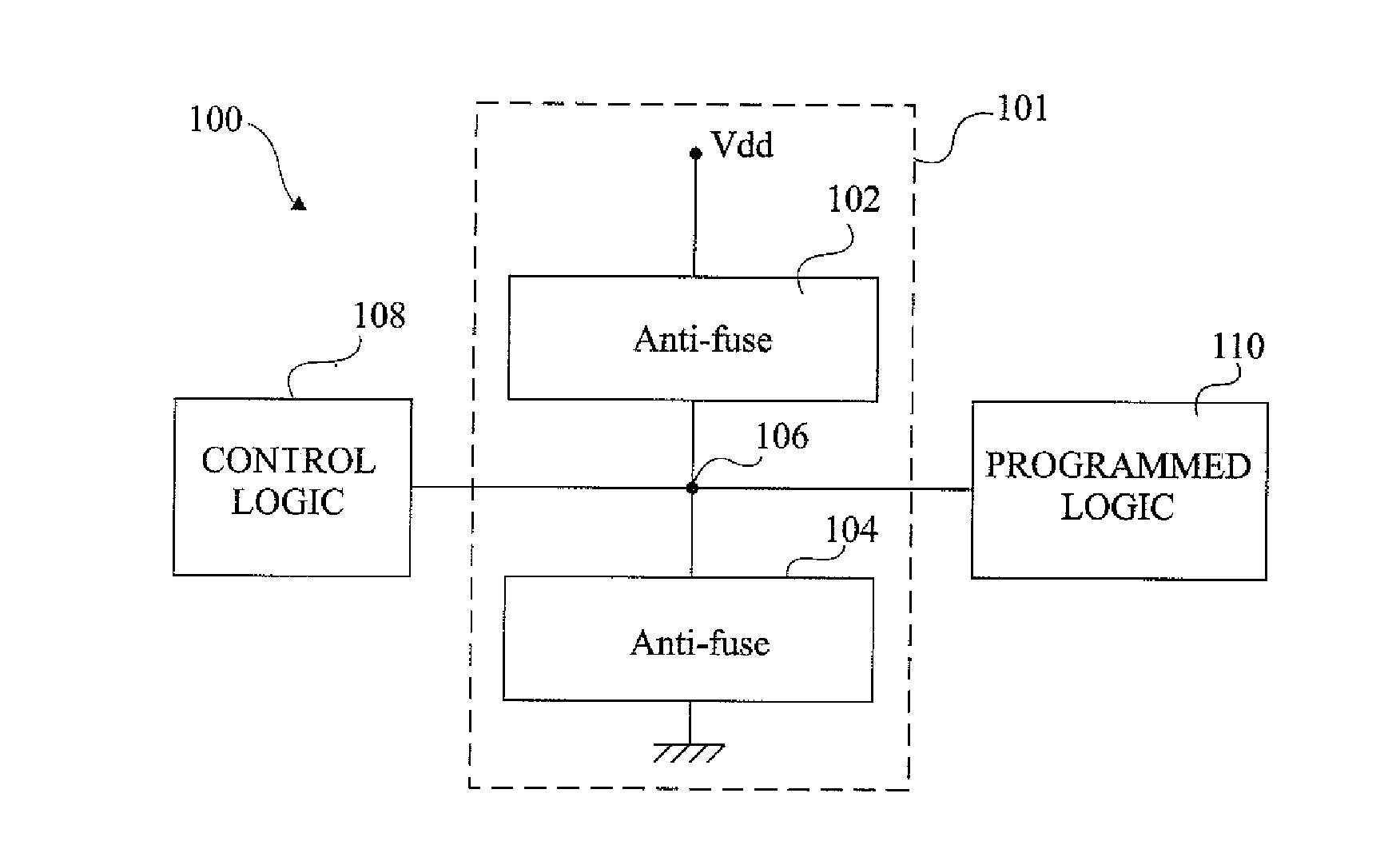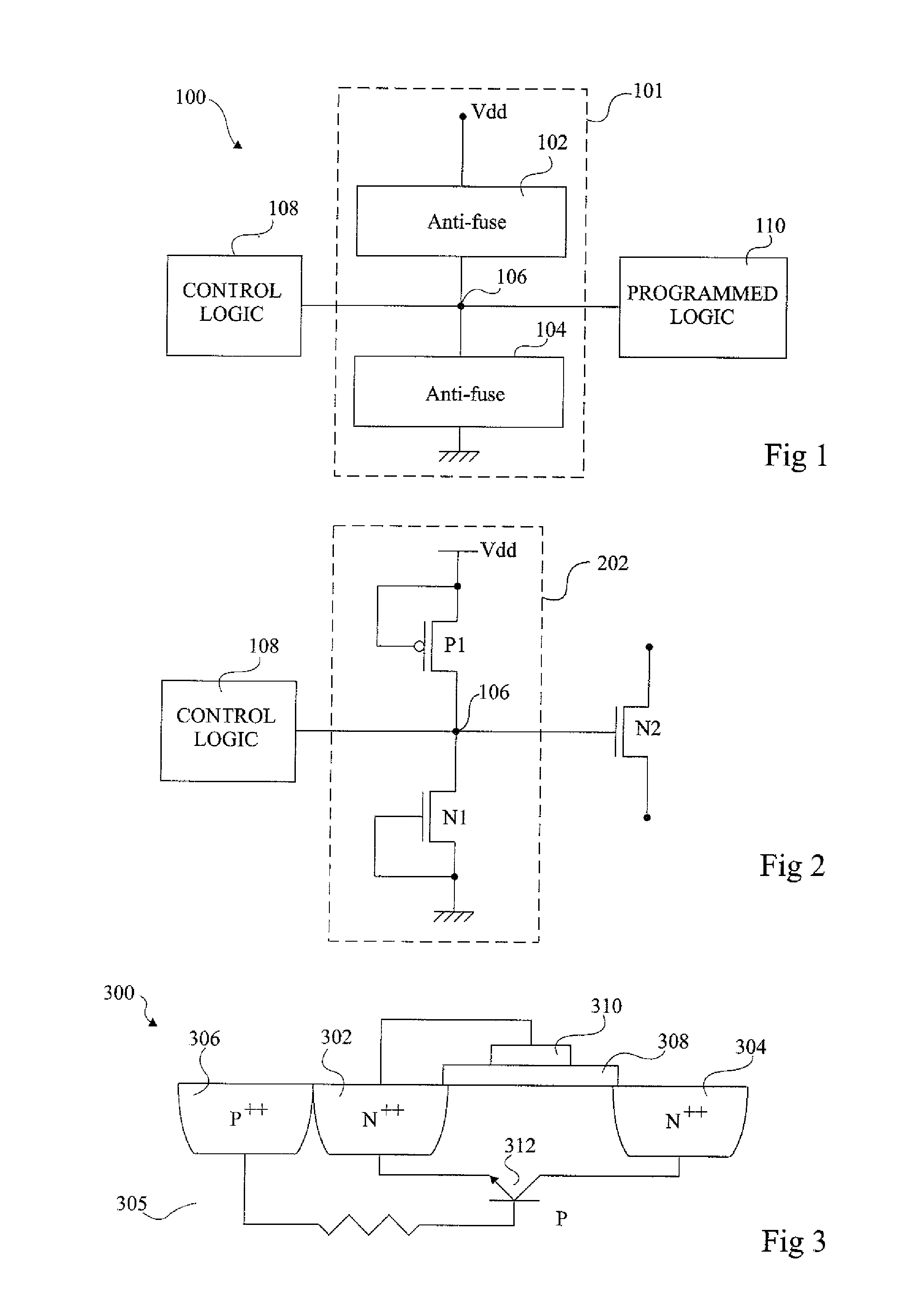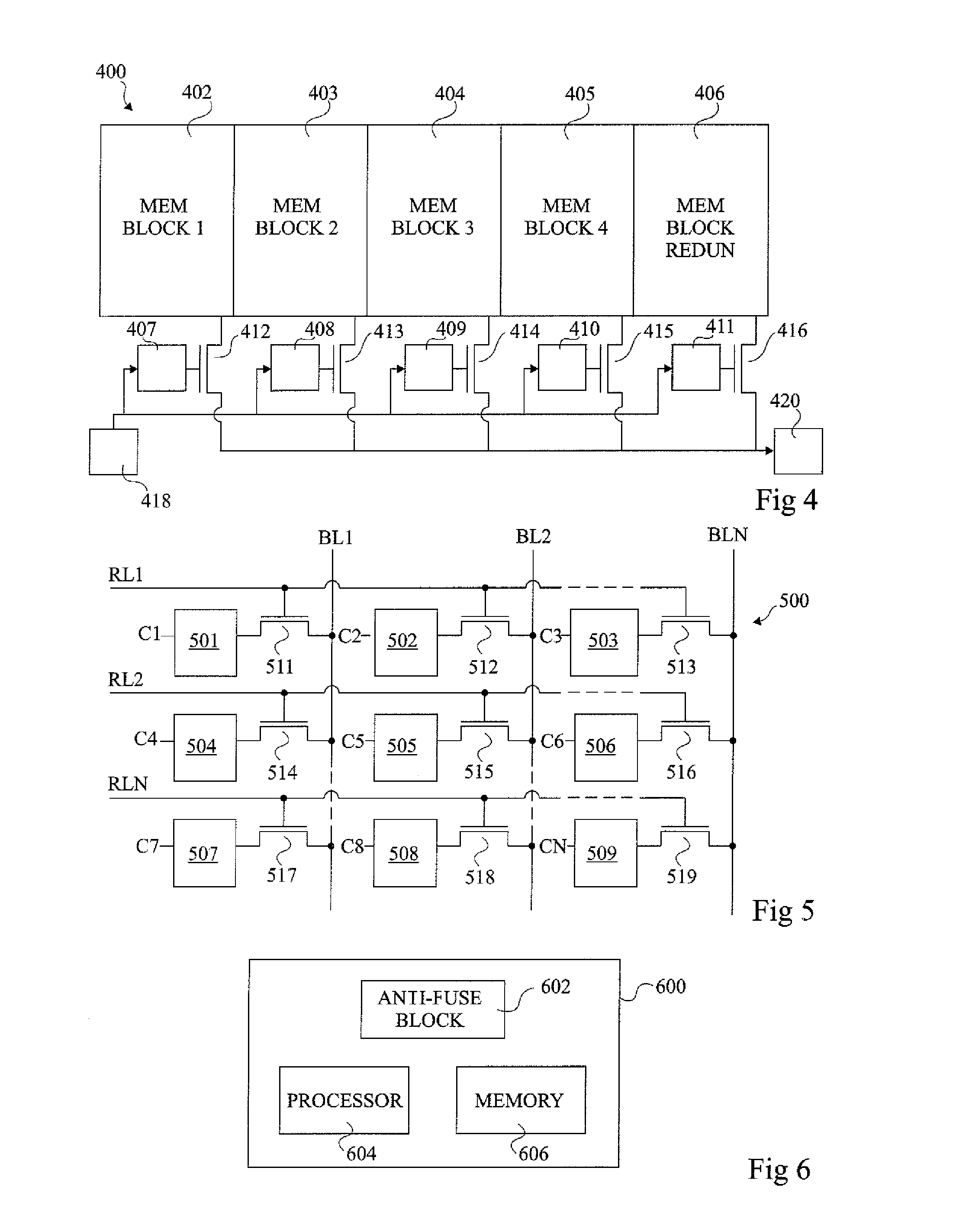Anti-fuse element
a technology of anti-fuse elements and circuits, applied in static storage, electrical equipment, instruments, etc., can solve the problems of not keeping its programmatic state throughout its lifetime, specific technology is not easily available, and cannot be programmed outside the process flow
- Summary
- Abstract
- Description
- Claims
- Application Information
AI Technical Summary
Benefits of technology
Problems solved by technology
Method used
Image
Examples
Embodiment Construction
[0028]FIG. 1 illustrates anti-fuse circuitry 100, comprising an anti-fuse cell 101 comprising a pair of anti-fuses 102 and 104. Anti-fuse 102 is coupled between a supply voltage Vdd and a node 106, while anti-fuse 104 is coupled between node 106 and ground. Node 106 is also coupled to control logic 108, which programs the anti-fuses 102 and 104. Node 106 is further coupled to programmed logic 110, which is, for example, in any circuitry arranged to act in response to the states of the anti-fuses 102 and 104.
[0029]Anti-fuses 102 and 104 are each open prior to programming, in other words isolating node 106 from the supply voltage Vdd and from ground. During a programming phase, one or the other of the anti-fuses 102, 104 is broken-down, such that node 106 is coupled to either the supply voltage Vdd or to ground. To achieve this, control logic 108 applies a programming voltage to node 106. Anti-fuses 102 and 104 do not require high voltages to cause break-down as break-down is for exam...
PUM
 Login to View More
Login to View More Abstract
Description
Claims
Application Information
 Login to View More
Login to View More - R&D
- Intellectual Property
- Life Sciences
- Materials
- Tech Scout
- Unparalleled Data Quality
- Higher Quality Content
- 60% Fewer Hallucinations
Browse by: Latest US Patents, China's latest patents, Technical Efficacy Thesaurus, Application Domain, Technology Topic, Popular Technical Reports.
© 2025 PatSnap. All rights reserved.Legal|Privacy policy|Modern Slavery Act Transparency Statement|Sitemap|About US| Contact US: help@patsnap.com



